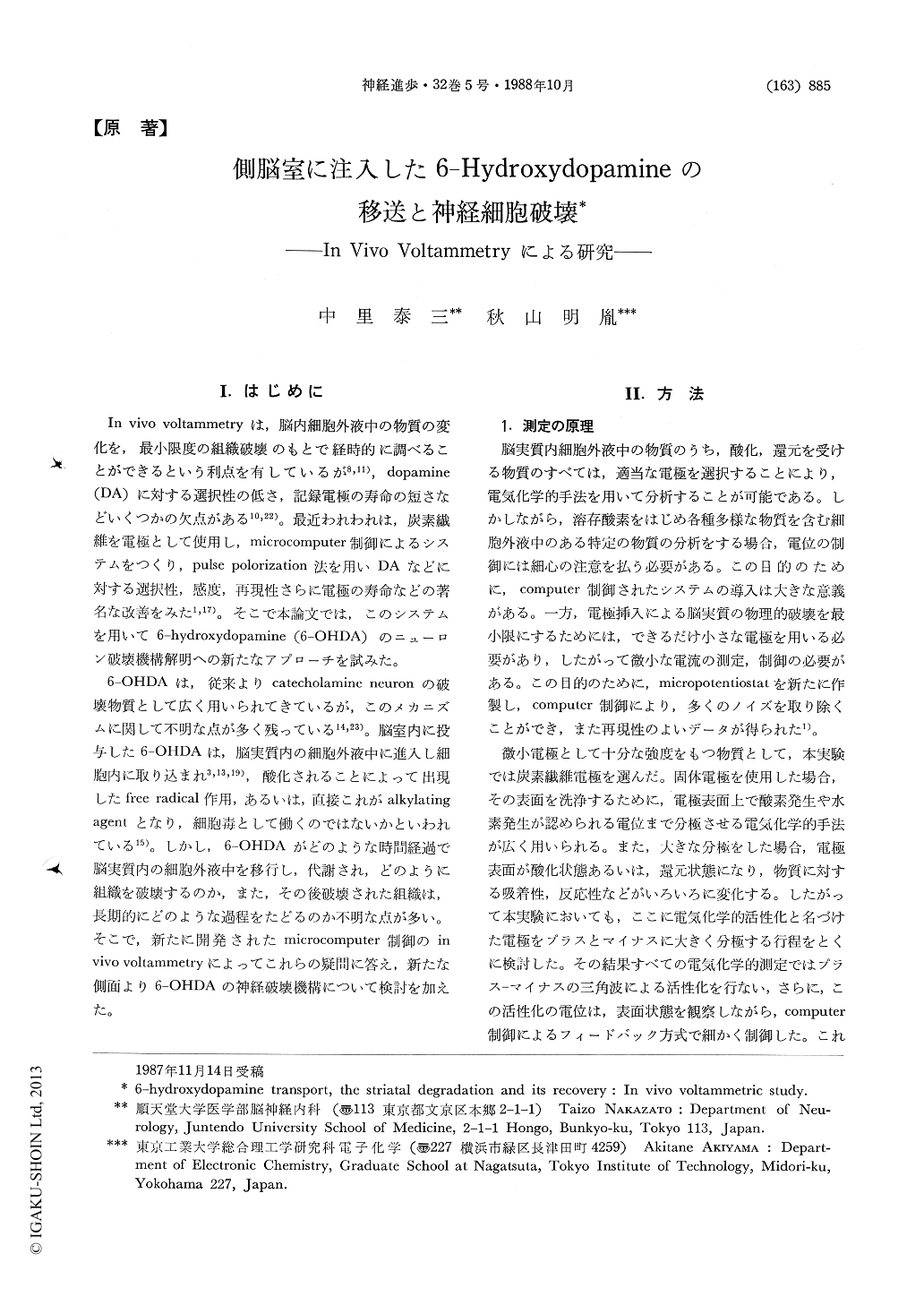Japanese
English
- 有料閲覧
- Abstract 文献概要
- 1ページ目 Look Inside
I.はじめに
In vivo voltammetryは,脳内細胞外液中の物質の変化を,最小限度の組織破壊のもとで経時的に調べることができるという利点を有しているが8,11),dopamine(DA)に対する選択性の低さ,記録電極の寿命の短さなどいくつかの欠点がある10,22)。最近われわれは,炭素繊維を電極として使用し,microcomputer制御によるシステムをつくり,pulse polorization法を用いDAなどに対する選択性,感度,再現性さらに電極の寿命などの著名な改善をみた1,17)。そこで本論文では,このシステムを用いて6-hydroxydopamine(6-OHDA)のニューロン破壊機構解明への新たなアプローチを試みた。
6-OHDAは,従来よりcatecholamine neuronの破壊物質として広く用いられてきているが,このメカニズムに関して不明な点が多く残っている14,23)。脳室内に投与した6-OHDAは,脳実質内の細胞外液中に進入し細胞内に取り込まれ3,13,19),酸化されることによって出現したfree radical作用,あるいは,直接これがalkylatingagentとなり,細胞毒として働くのではないかといわれている15)。
The in vivo voltammetry used today is advantageous in its facilitation of direct, consecutive examination of intracerebral dopamine (DA) release. It is disadvantageous, however, in its low selectivity to DA and short lifetime of recording electrodes. The newly designed microcomputer-controlled in vivo voltammetry using a carbon fiber as a working electrode, has greatly advanced the lifetime length and selectivity. The present experiment was performed employing this system to study the mechanism of degradation of neurons induced by 6-OHDA.
The working electrode was placed stereotaxically in an unilateral striatum, and a stainless steel pipe was also placed in the other side of the lateral ventricle. Reference (Ag/AgCl) and auxiliary (stainless steel screw) electrodes were cemented onto the dura matter. In vivo experiments were carried out two weeks after the operation. Potentiostatic pulse polarization was conducted for in vivo measurement for the consecutive monitoring of DA, DOPAC, 6-OHDA concentrations. The data were recorded every three minutes. Moreover, a modified differential pulse voltammogram (DPV) was taken for DA identification over a thirtyminute time period.

Copyright © 1988, Igaku-Shoin Ltd. All rights reserved.


